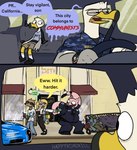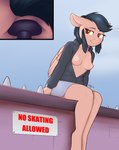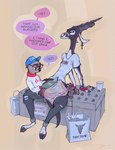
hostile architecture
Hostile architecture is an urban-design strategy that uses elements of the built environment to purposefully guide behavior. It often targets people who use or rely on public space more than others, such as youth, poor people, and homeless people, by restricting the physical behaviours they can engage in.
The term hostile architecture is often associated with items like "anti-homeless spikes" – studs embedded in flat surfaces to make sleeping on them uncomfortable and impractical. This form of architecture is most commonly found in densely populated and urban areas. Other measures include sloped window sills to stop people sitting; benches with armrests positioned to stop people lying on them; water sprinklers that spray intermittently; and public trash bins with inconveniently small mouths to prevent the insertion of bulky wastes. Hostile architecture is also employed to deter skateboarding, BMXing, inline skating, littering, loitering, public urination, and trespassing, and as a form of pest control.
Hostile architecture - From Wikipedia, the free encyclopedia
Posts (view all)



